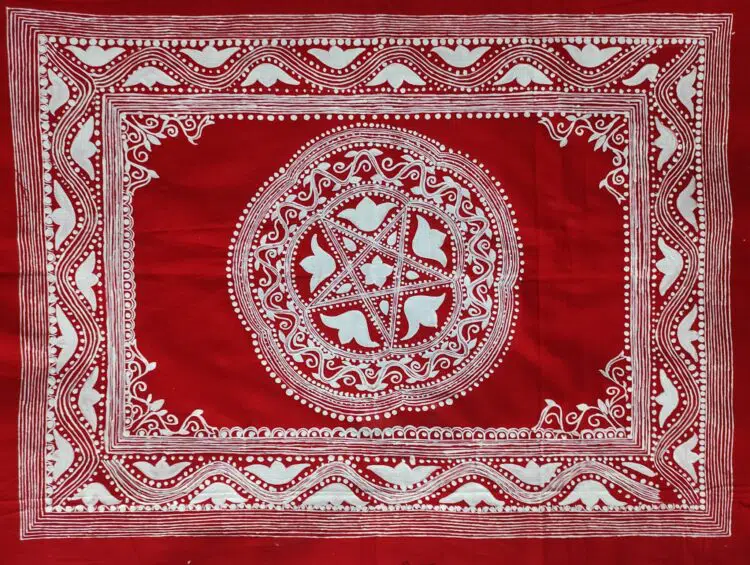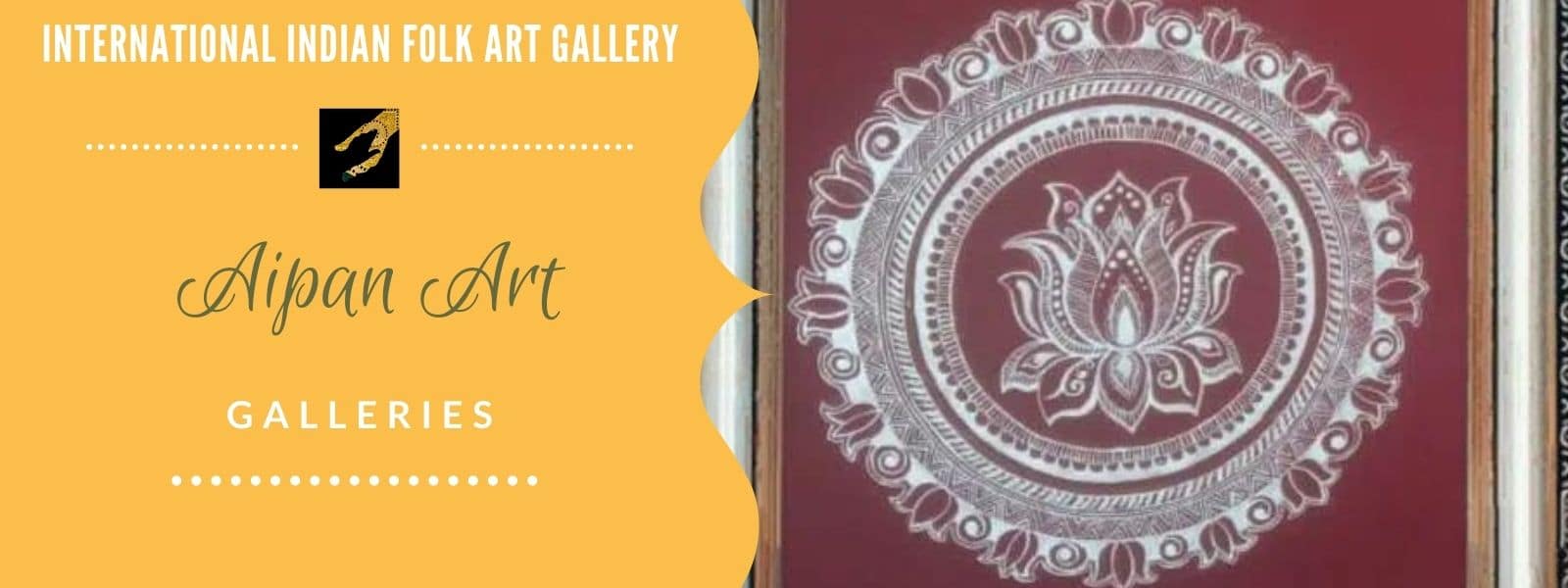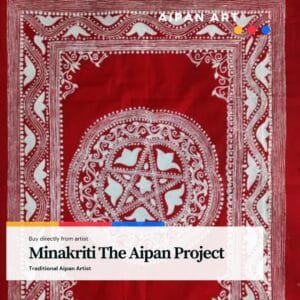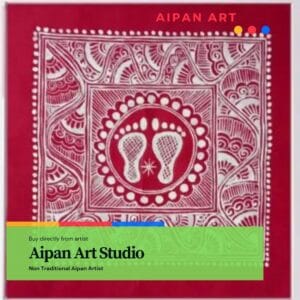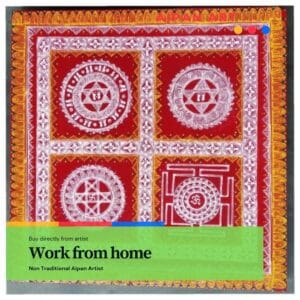Aipan Art
Aipan art originated from Almora in Uttarakhand, which was founded during the reign of the Chand dynasty. It flourished during the reign of the Chand dynasty in the Kumaon region.
The word Aepan is a derivative of Arpan. A commonly used word for it is “Likhai” (writing). Although it is a pattern made with fingers. Aipan are used as ritual design for Pujas, festivals and ceremonies connected with birth, janeu, marriage and death.
The Chand dynasty was a Hindu Rajput dynasty that ruled much of the northern Indian subcontinent around the 10th century.
The Aipan art form has many regional variations. It’s origins are in the North Indian state of Uttarakhand. Aipan art is an ancient style of painting depicting mostly Jain, Hindu and Buddhist themes. The designs and motifs in Aipan Art are motivated by the beliefs of the community and various aspects from nature.
Some people believe that writing on empty walls with a reddish paint brings about good fortune. Others believe that this is just an aesthetic custom which has no meaning, but it’s still pretty cool.
Aipan Art process: The creation of rice flour art has deep cultural and religious significance in Kumaon. It is often found on the floor and walls of Puja rooms, as well as at entrances to homes. This form of artisanry is mostly practiced by women from this region.
Aipan art is a type of folk art that originates in Kumaon in the Indian Himalayas. It is done at special occasions and rituals usually.
Different types of Aipans: Saraswati chowki, Chamunda hast chowki, Nav Durga chowki, Shiv or Shivarchan peeth, The surya darshan chowki, Janeyu chowki, Asan chowki, Dhuli arghya chowki, Acharya chowki, Durga thapa, Jyoti patta, Lakshmi tantra
